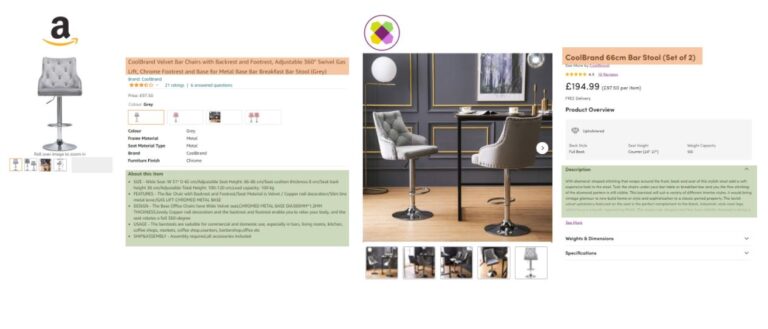
The e-commerce market for electronics has seen steady growth in the last few years and is projected to keep growing as overall electronics sales grow, and an increasing proportion of these sales happen online. According to eMarketer, online sales of electronics are projected to grow in the US from $178 billion in 2021 to $263 billion in 2024.
However, many factors will challenge this growth, from ongoing supply chain disruptions to global shortages of semiconductor chips and lithium. In addition, electronics consumers are a unique audience in e-commerce, and there is still much to be learned. To understand more about this population, we included specific questions in our recent global survey of more than 5,000 online shoppers, conducted with research firm Dynata, that addressed the habits and perspectives of buyers of electronics goods. In this article, we share the biggest takeaways from that survey.
What Are the Characteristics of the Electronics Consumer?
Online consumers of electronic items are savvy and diligent shoppers. They do their research and aren’t afraid to buy from emerging marketplaces or sellers in other locations. Overall, they’re frequent, thorough, avid online shoppers.
Bold
The e-commerce activity of online electronics buyers tends to venture further off the beaten path than that of other consumers. Our survey revealed that 50% of electronics buyers had purchased items from foreign sites, compared to 33% of non-electronics buyers. With many electronics consumers early adopters of technology, it’s unsurprising that they would exhibit less hesitation in procuring items sold in other countries.
Active
Electronics buyers like to shop, with or without direct intention to buy. In fact, in our survey, nearly half (47%) of electronics consumers said they frequently browse items online, compared to just over a third (35%) of non-electronics buyers.
In addition, they visit multiple sites. While just 10% of non-electronics buyers visit five or more sites during their buying journeys, 16% of electronics consumers do visit that many sites. And forty-six percent use three or more online marketplaces regularly.
Analytical
Impulse buying does not appear to be a hallmark of the online electronics consumer. Research appears to be a top priority amongst this group. .
A key factor in their shopping habits: their e-commerce activity doesn’t cease when they leave home. For example, when shopping in-store, electronics buyers are more likely to research information. They’re 15% more likely to look up online prices often, 15% more likely to check online reviews and 13% more likely to look for additional product information.
What are they researching? Most likely, prices and reviews. Our survey indicated that electronics buyers are 10% more likely to compare prices before buying. 19% are more likely to give up on a purchase if they think they could find a better price elsewhere or later. When choosing between products, 53% of electronics buyers indicated that reviews were “very important” in the decision process.
Where Are They Shopping?
In a word: Amazon. Although electronics shoppers are known to visit many sites, the marketplace giant appeared as one constant destination in our survey. In the US and Europe (where Amazon’s presence is more prevalent), 74% of electronics shoppers plan to use Amazon for their 2022 holiday/festive shopping, compared to 64% of consumers in other categories.
All of that browsing also dovetails with high levels of activity on Amazon. For electronics shoppers in the US and Europe, 55% indicated they have purchased an item on Amazon after seeing an ad for that item on Amazon. For shoppers in other categories, this figure is at 45%. Retail media, while important in many verticals, may play an outsized role in gaining visibility for electronics goods sellers.
What Influences Electronics Buyers?
Digital marketing and advertising appear to have a significant impact on electronics consumers. Once they identify the product they’re looking for at the right price point, they take action. In the last year, 47% have clicked on an online advertisement with the intent to buy a product. And 53% say they have clicked on a sponsored or promoted product, compared to 37% of non-electronics buyers.
Social media may also play a role in capturing the attention of these buyers. Our survey found that electronics consumers were 1.22 times more likely to have been influenced to purchase an item after seeing it promoted by a brand on social media.
How Should Sellers Respond?
It’s more important than ever to understand the online shopper and anticipate shifting behaviors as technology and e-commerce continue to evolve. Electronics buyers are, by nature, early adopters and they’re more likely to test and explore new options in e-commerce. Retail media engagement is high and will likely strengthen in the future. However, a steady presence, especially in pricing, remains critical for brands and retailers to increase purchasing confidence in these savvy consumers.
What Are the Best Strategies to Attract Electronics Consumers and Clinch Sales?
ChannelAdvisor has over 20 years of e-commerce experience, helping thousands of brands and retailers across the world navigate the changing e-commerce landscape. If you’d like to view a demo of our platform or talk to an e-commerce consultant about your current strategies, reach out here.

![How to Sell on Walmart Marketplace: 6 Steps to Success [Step by Step Guide]](https://technobabble.com.au/thegatewaynetau/wp-content/uploads/sites/11/2022/09/how-to-sell-on-walmart-marketplace-6-steps-to-success-step-by-step-guide-768x402.jpg)



